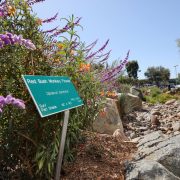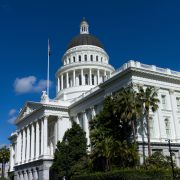Take the Watershed Approach to Landscaping
Many San Diego County residents embrace sustainability as a central principle for creating or renovating their landscapes. Treating every garden, no matter its size, as its own mini-watershed allows it to capture and retain water to nurture a diverse habitat of plants and helpful insects.
What elements do you need to consider when taking a watershed approach to your landscape?
Follow the Four Key Principles of Sustainable Landscaping
The formula for successful sustainable landscaping includes four key principles:
- Healthy, Living Soils: Healthy, living soils rich in organic content feed a complex soil food web. The soil holds water like a sponge, and has nutrients for optimal plant health.
- Climate Appropriate Plants: Many choices of beautiful groundcovers, shrubs, and trees are compatible with San Diego’s mild Mediterranean climate. These plants use less water and display diverse colors, textures and shaped with endless design options.
- Rainwater as a Resource: Sustainable landscapes make the most of natural rainfall. Slowing the flow of water off rooftops and hard surfaces allow it to be captured and sink into the soil, or be stored for later use.
- High-Efficiency Irrigation: Your irrigation can maximize water-use efficiency through smart controllers to adjust water automatically to changing weather conditions, and high-performance distribution components to regulate pressure and tailor water delivery to the exact needs of your landscape plants.
Those principles were then put into practice at the Sustainable Landscaping Demonstration Garden at the Water Authority headquarters, 4677 Overland Ave., San Diego.
The 3,000-squre-foot garden is open to the public. It includes an exhibit-quality sign to introduce visitors to key sustainable landscaping principles. Smaller signs throughout the landscape identify specific plant types. Free brochures on sustainable landscaping featuring the landscape’s design plan and plant palette are also available for visitors to take home.
This article was inspired by the 71-page Sustainable Landscapes Program guidebook available at SustainableLandscapesSD.org. Hardcopies are available free of charge at the Water Authority’s headquarters, 4677 Overland Ave., Kearny Mesa. The Water Authority and its partners also offer other great resources for landscaping upgrades, including free WaterSmart classes at WaterSmartSD.org.




